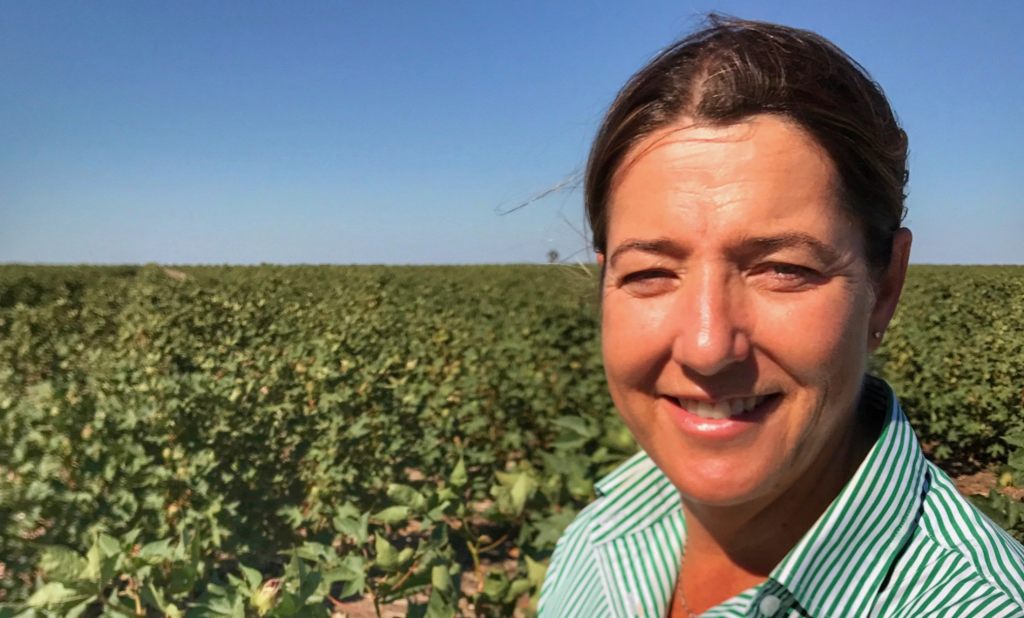A Career in Cotton
Annabelle Guest reflects on her career in cotton research - the industry, the progress and the future.

Annabelle Guest has seen her fair share of hot days walking in cotton rows.
Working in cotton research in NSW for the last 24 years has been an extremely rewarding job, but the conditions are certainly not for the faint hearted.
It’s during the summer months, when cotton does most of its growing, that she takes to the field to check how the plants are dealing with the heat. While the rest of the population is seeking a shady tree or an air-conditioned office, Annabelle is in full sun getting eye level with some cotton flowers.
But she wouldn’t change it for a second.
“Cotton is an innovative, interesting and exciting industry to work in,” she says.
“In my first job out of uni I came to Narrabri to work for a private research company for three months and I ended up staying for 24 years. When I first started working in cotton I enjoyed it because there was a lot happening and there were many professional young people. The other thing about the cotton industry is that always, even in the 90s, there were quite a few women around and you were very much accepted regardless of your gender. That probably wasn’t happening in a lot of other industries.”
Originally from a property in south-west Queensland, Annabelle completed her degree in agricultural science at the University of Queensland before moving to Narrabri.
She now has her own business, AgDel, which is regularly contracted by government research corporations and global companies to perform cutting edge research trials.
Annabelle is also working as a Research Coordinator for the Dryland Cotton Research Association where she is focusing on making information available to growers.
“I’m trying to make sure it’s practical information and things they can implement,” she says. “I’m coordinating the research and dealing directly with growers.”
Through her work Annabelle has experienced first-hand the major changes that have taken place within the industry.
“The biggest change has been the introduction of GM cotton, that is Bollgard cotton, reducing pesticide use. This has completely revolutionized the cotton industry for the better and really changed how you do research,” she explains.
“In the beginning we were doing lots of research regarding new insecticides to combat heliothis resistance and other types of resistance, but now it’s changed to a lot more plant physiology, genetically modified cotton and weed resistance - things that weren’t around at all in the 90s.
“In the last few years it’s also been interesting to see the expansion of the industry south and seeing how they do it down there. It’s quite different to traditional cotton growing.”
For the future, Annabelle is keen to continue her work in cotton research innovation.
“It will be hugely important to see how the cotton handles this hot summer, there will be lots of findings to come out of this,” she says. “In dryland cotton we’re looking at how to improve its establishment and how to modify plants to cope with stress. I also want to do more work in the spray drift arena, trying to stop the hormone damage that’s happening to cotton.
“It’s about trying to make it more sustainable and minimizing environmental impacts. I think a career in agriculture is the most important job, we’re feeding and clothing the world. The world population is skyrocketing so agriculture is crucial to the survival of the human race.”
in Latest News
Share this post
Posts this year
- October 2024 (1)
- September 2024 (1)
- August 2024 (1)
- November 2023 (1)
- June 2023 (1)
- February 2023 (2)
- November 2022 (1)
- October 2022 (1)
- July 2022 (2)
- June 2022 (1)
Archived Posts
- Posts in 2023
- Posts in 2022
- Posts in 2021
- Posts in 2020
- Posts in 2019
- Posts in 2018
- Posts in 2017
- Posts in 2016